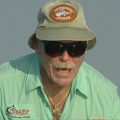The Harris Collection of Irish and English Fly Patterns
A two-part article in the Winter and Spring 2019 issues of The American Fly Fisher, the journal of the American Museum of Fly Fishing, explores the world’s oldest known artificial flies. The patterns date from the late 1700s and early 1800s and are part of the Harris Collection of Irish and English fly patterns at AMFF.
Read more in the press release below.
The Harris Collection of Irish and English Fly Patterns
Manchester, Vermont (April 2019) The American Museum of Fly Fishing
Celebrating the World’s Oldest Known Flies

A rare look back more than two centuries to the fly-tying savvy revealed by the extraordinary Harris Collection of Irish and English fly patterns at the American Museum of Fly Fishing.
The American Fly Fisher, the journal of the American Museum of Fly Fishing, has published a thorough analysis of the world’s oldest known artificial flies, dating from the late 1700s and early 1800s. Written by Andrew Herd and Paul Schullery, the two-part article appears in the Winter and Spring 2019 issues of the journal.
Herd, the leading British fly-fishing historian, and Schullery, former director of the museum, describe and analyze the unique collection of historic trout and salmon flies that include the oldest known flies anywhere, dating from the late 1700s. “These are amazing artifacts,” says AMFF Executive Director Sarah Foster. “Merely their survival for more than two centuries is a big deal.” The collection has never before been studied or analyzed in any detail, as it has spent almost all of the past 200 years in private hands. In several significant ways, Herd and Schullery’s analysis of these flies pushes back the earliest known dates of various fly-tying practices, often by decades. American Fly Fisher Editor Kathleen Achor agrees: “Among other things, this collection has also allowed us to connect the first realistic published illustrations of artificial flies from the late-eighteenth and early-nineteenth centuries with historically contemporary artificial flies. These articles are possibly the most important new development in the study of early fly-fishing history since Professor Richard Hoffmann’s scholarly research in the 1980s and 1990s dramatically reshaped our understanding of the origins of Old World fly fishing.”
The articles are generously illustrated with scans of the earliest known woodcuts and engravings of flies that appeared in fishing books in the 1600s and 1700s, as well as with a wealth of spectacular color photographs of painstakingly accurate replicas of the original flies tied by Australian master fly tier Robert Frandsen.
The flies were originally gathered, used, and carefully documented by the Gregory family of Galway, whose colorful and often quirky history is also chronicled in the articles. The flies eventually came into the hands of Irish fly-fishing writer John Richard Harris, a fellow of the Royal Entomological Society and author of the milestone An Angler’s Entomology (1952), which featured among its many illustrations a photograph of a few of these very flies. The flies eventually made their way into the hands of Dorothy Downs (of Branford, CT), who generously donation them to the museum in 1991.
“We at the museum have always prided ourselves on leading the exploration of our sport’s fascinating history,” said Sarah Foster. “Over the years we’ve published many discoveries, but none may be more significant than this groundbreaking study of a truly unique collection of flies. For a direct connection with our eighteenth-century angling ancestors, there is nothing that approaches the Harris Collection.”
The American Museum of Fly Fishing was founded in 1968 by a group of passionate anglers who wanted to ensure that the history of fly fishing was preserved as an important part of America’s culture, industry, and history. Having just celebrated its fiftieth anniversary, staff has energetically collected, studied, preserved, and exhibited the sport’s greatest treasures, including flies by countless historical and modern authorities ranging from Theodore Gordon and Mary Orvis Marbury to Lefty Kreh and Ernest Schwiebert.
The American Museum of Fly Fishing is open from 10:00 a.m.to 4:00 p.m. Tuesday through Sunday from May through October, and Tuesday through Saturday from November through June. For more information about the museum, please visit amff.org or connect on Facebook, Instagram, and Twitter.
Media Contact: Samantha Pitcher| 802-362-3300 ext. 205, spitcher@amff.org
Video Hatch: “April Vokey's Journey”
Podcast Episode: Paul Schullery on The Orvis Fly Fishing Guide Podcast











